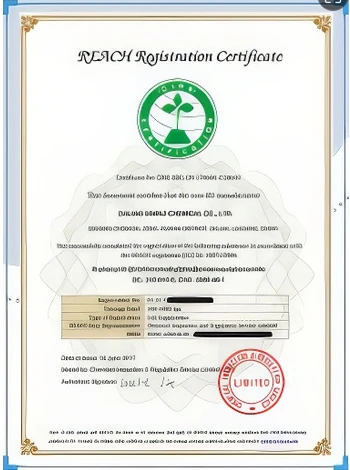



chlorine dioxide function
The Function of Chlorine Dioxide An Overview
Chlorine dioxide (ClO2) is a pale yellow gas that has gained significant attention in various industries due to its powerful oxidizing properties. This compound is primarily recognized for its efficacy as a disinfectant and bleaching agent, making it indispensable in water treatment, food safety, and sanitation applications. Understanding the function of chlorine dioxide not only highlights its versatility but also its critical role in public health and environmental protection.
Water Treatment
One of the most prominent functions of chlorine dioxide is its application in water treatment. Unlike traditional chlorine, which can form harmful by-products like trihalomethanes, chlorine dioxide does not produce these compounds, making it a safer choice for disinfecting drinking water. The oxidation capabilities of ClO2 allow it to eliminate bacteria, viruses, and other pathogens effectively. Moreover, it can also break down organic materials, which helps in improving water clarity and taste. Many municipal water systems globally utilize chlorine dioxide to ensure safe and potable water reaches their residents.
Disinfection and Sanitization
Beyond water treatment, chlorine dioxide is extensively used in disinfection and sanitization processes across various sectors, including healthcare, food processing, and transportation. In hospitals, ClO2 is employed to sterilize surfaces, equipment, and medical instruments, reducing the risk of healthcare-associated infections. Its strong antimicrobial action makes it an effective agent against a wide spectrum of pathogens, including bacteria, viruses, fungi, and spores.
In the food industry, chlorine dioxide plays a crucial role in ensuring food safety. It is used to sanitize surfaces, equipment, and even the food itself. For example, ClO2 can be applied to fruits and vegetables to reduce the microbial load, thereby extending their shelf life and ensuring they are safe for consumption. The U.S. Food and Drug Administration (FDA) has recognized chlorine dioxide as safe for use in specific food processing applications, further solidifying its role in public health.
Bleaching Agent
chlorine dioxide function

Chlorine dioxide is also well-known for its bleaching properties, which are widely applied in the paper and pulp industry. It serves as an eco-friendly alternative to elemental chlorine for bleaching wood pulp. As an oxidizing agent, ClO2 effectively removes the lignin that gives wood its brown color, resulting in a bright, white pulp without producing harmful chlorinated by-products. This not only aligns with sustainability efforts but also results in a higher quality end product, as chlorine dioxide-treated paper exhibits better strength and brightness.
Environmental Benefits
The environmental impact of chlorine dioxide is an essential aspect of its function. Its ability to oxidize organic and inorganic compounds means that it can effectively detoxify hazardous waste materials. For instance, in wastewater treatment, chlorine dioxide can break down complex pollutants, aiding in the purification process before the water is released back into the environment. Furthermore, its low residue nature ensures that harmful chlorinated compounds are not left behind, making it a safer option for both humans and ecosystems.
Safety and Handling
Despite its numerous advantages, it is crucial to handle chlorine dioxide with care. As a gaseous compound, it can be hazardous at high concentrations, leading to respiratory irritations or other health issues. Proper safety measures and equipment must be employed during its use to mitigate risks. Moreover, it is essential to follow regulatory guidelines to ensure that its application does not pose a threat to public health or the environment.
Conclusion
In conclusion, chlorine dioxide serves a multitude of functions across various fields, primarily characterized by its strong oxidizing properties. Its role in water treatment, disinfection, and bleaching, combined with its environmental benefits, underscores its importance in maintaining public health and safety. As industries continue to seek sustainable and effective solutions, chlorine dioxide is well-positioned to remain an essential tool in achieving these goals while minimizing environmental impacts. Its continued research and application can lead to even broader uses, further enhancing its value in contemporary practices.
-
Why Sodium Persulfate Is Everywhere NowNewsJul.07,2025
-
Why Polyacrylamide Is in High DemandNewsJul.07,2025
-
Understanding Paint Chemicals and Their ApplicationsNewsJul.07,2025
-
Smart Use Of Mining ChemicalsNewsJul.07,2025
-
Practical Uses of Potassium MonopersulfateNewsJul.07,2025
-
Agrochemicals In Real FarmingNewsJul.07,2025
-
Sodium Chlorite Hot UsesNewsJul.01,2025










